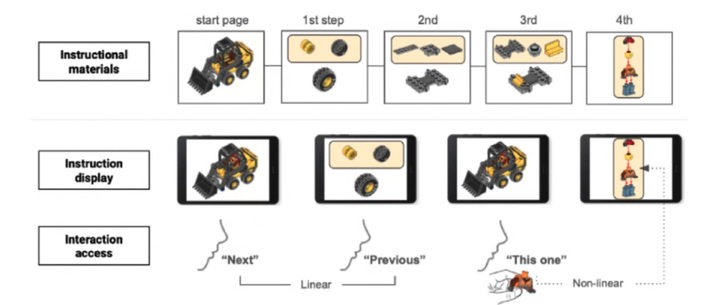
Abstract
Given the widespread use of procedural instructions with non-linear access (situational information retrieval), there has been a proposal to accommodate both linear and non-linear usage in instructional design. However, it has received inadequate scholarly attention, leading to limited exploration. This paper introduces Self-Initiated Explorable (SelfIE) instructions, a new design concept aiming at enabling users to navigate instructions flexibly by blending linear and non-linear access according to individual needs and situations during tasks. Using a Wizard-of-Oz protocol, we initially embodied SelfIE instructions within a toy-block assembly context and compared it with baseline instructions offering linear-only access (N=21). Results show a 71% increase in user preferences due to its ease of reflecting individual differences, empirically supporting the prior proposal. Besides, our observations identify three strategies for flexible access and suggest the potential of enhancing the user experience by considering cognitive processes and implementing flexible access in a wearable configuration. Following the design phase, we translated the WoZ-based design embodiment as working prototypes on the tablet and OHMD to assess usability and compare user experience between the two configurations (N=8). Our data yields valuable insights into managing the trade-offs between the two configurations, thereby facilitating more effective flexible access development.